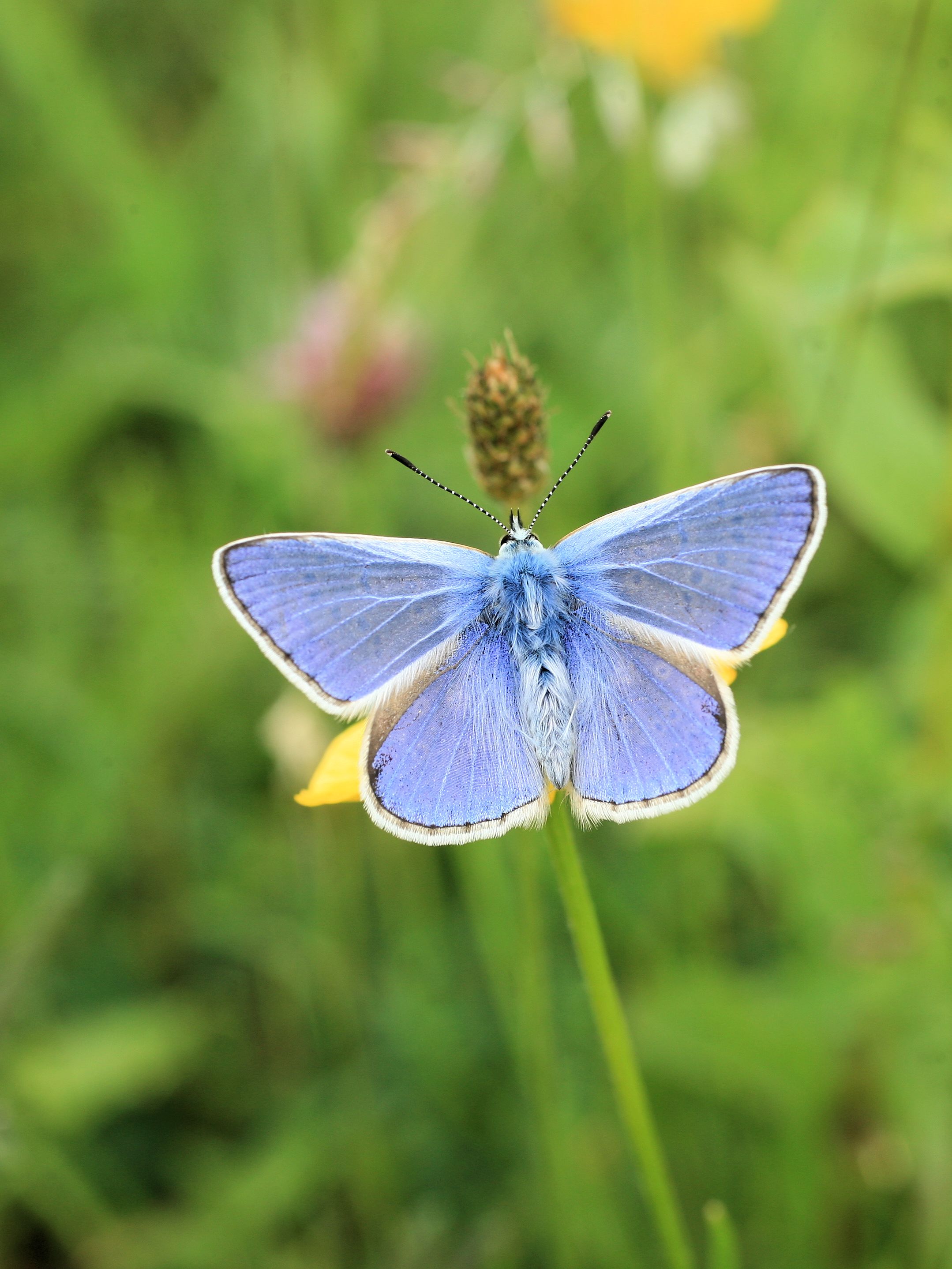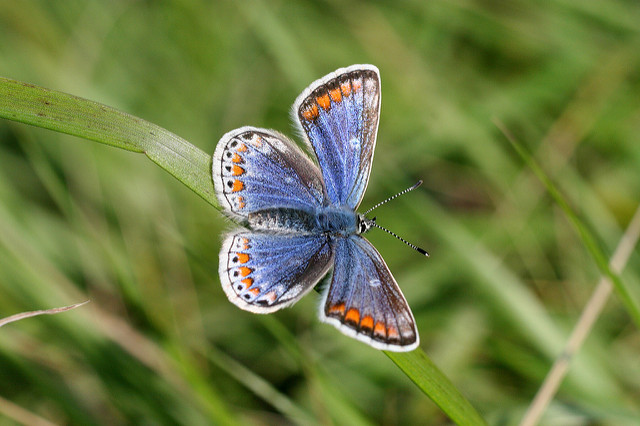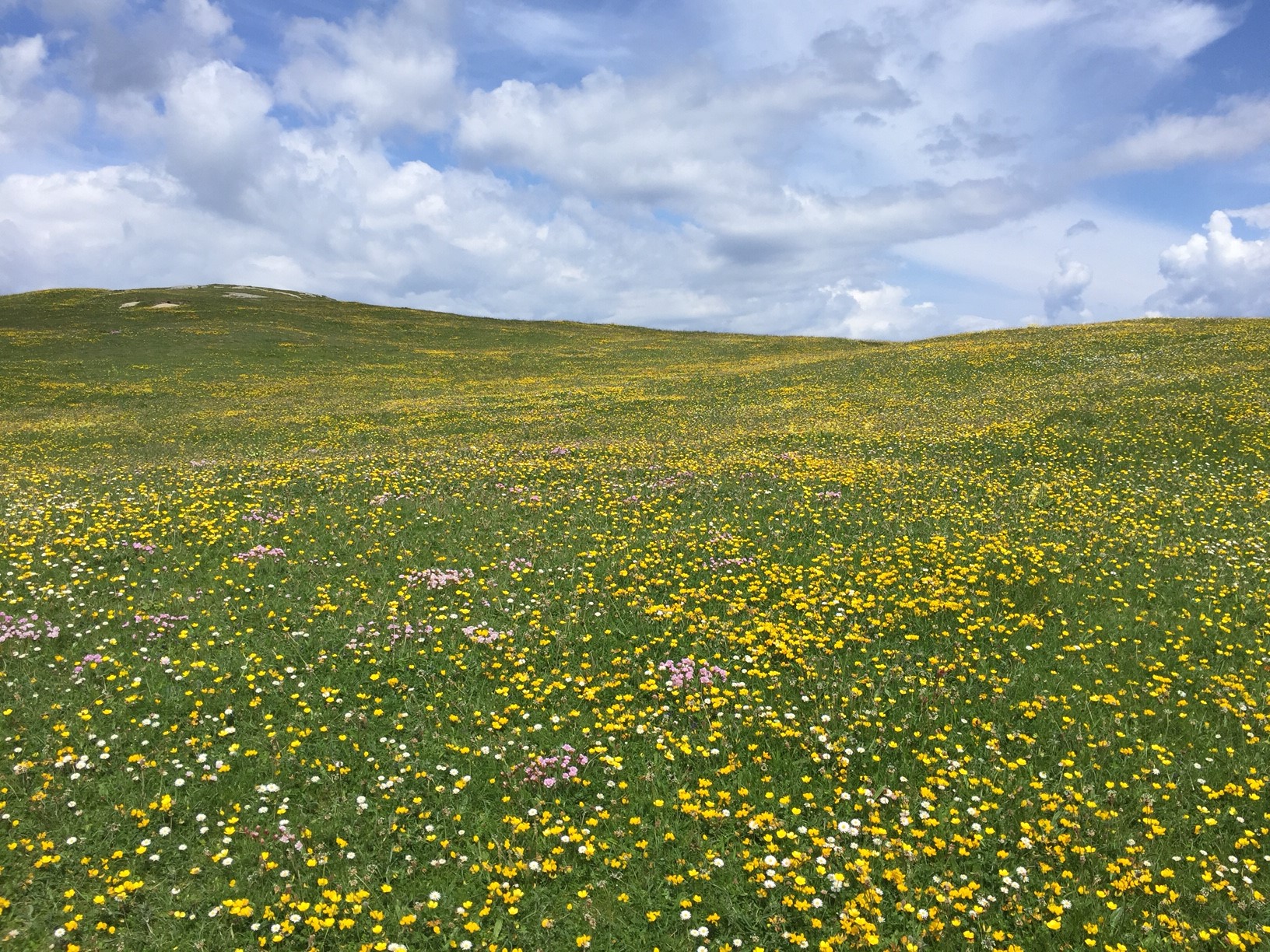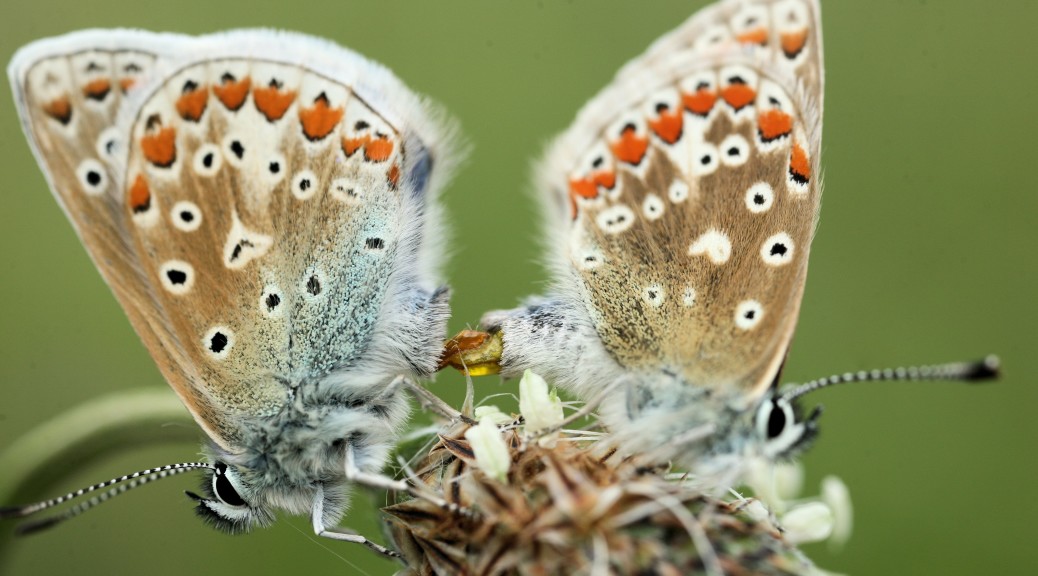
This spring, I visited parts of Connemara that I would have known well, when I worked there in 1990-1992. I remember the machair grasslands at Aughrus Beg, just west of Cleggan as being a magical place, so I decided to search them out again to see if they have changed. And much to my delight, the extensive grasslands here still look fabulous. The rolling grasslands were carpeted with yellow bird’s-foot trefoil and dandelions and pinks of thrift- a veritable pollinator’s paradise. As it was early in the season I wasn’t expecting much butterfly activity, but close to the shore, along a sheltered bank, I came across a couple of common blue butterflies enjoying the spring sunshine. I was able to get my photograph, and tick another species from my list.


Common blue is the commonest and most widespread of the three species of blue butterfly that we get in Ireland. It can be found in dry areas wherever its food plant bird’s-foot trefoil grows, and on the machair here at Aughrus Beg, it can be extremely plentiful at peak season. Males are bright blue with no markings on the upper wing, whereas in females the blue is fringed with orange spots. This predominately blue form of the female common blue is considered an Irish subspecies, referred to as Mariscolore, which differs from the predominately brown females found in England and Wales. Both sexes have well marked underwings with prominent orange dots. These differentiate common blue from the other two species of blue butterfly found in Ireland. If you have missed seeing common blue this spring, don’t worry, for they are double brooded and will be flying in abundance again in August.
Speckled wood #1, Dingy skipper #2, Wall brown #3 & Common blue #4.


